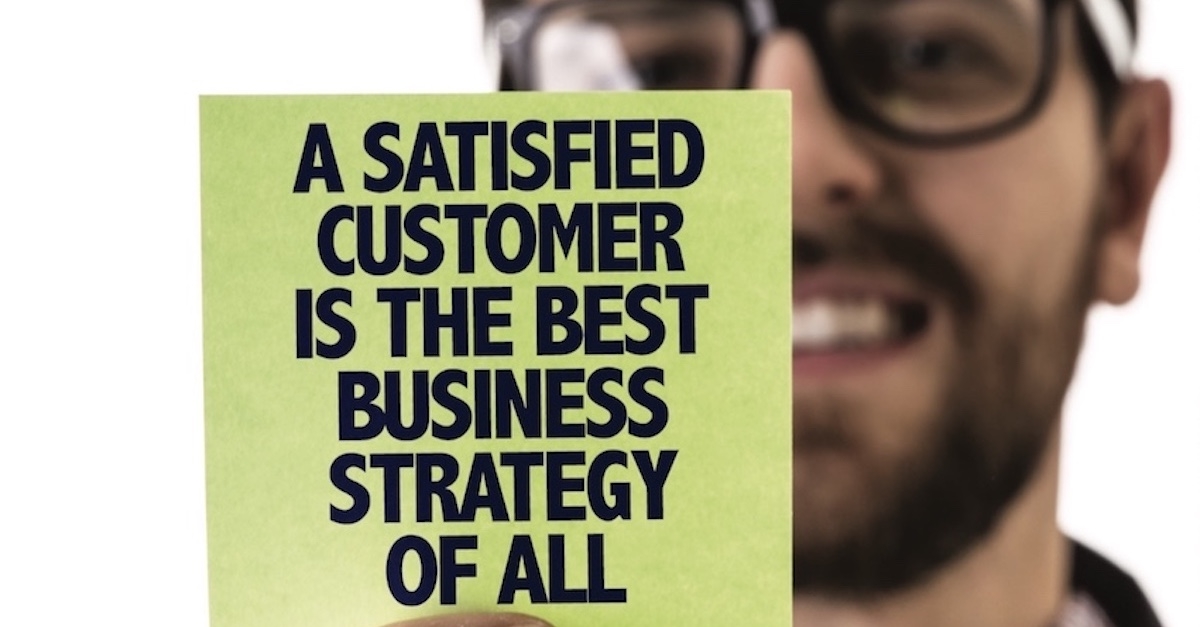
Features
Business
Sales
Five keys to customer loyalty
While many factors will affect the outcome of a purchase, these top tips can help positively impact your customer’s buying process
September 21, 2018 By Taylor Boerboom

There are countless brands to choose from and just as many reasons to choose – or not choose – one over another. What drives a consumer to purchase an object or service from one company over the next? Although many factors affect the outcome of a purchase, taking these five actions will help you positively impact your customer’s buying process.
1. Personalize your message
People love to see and hear their own name — which explains why there are so many name keychains at souvenir shops and brands like Coca-Cola that have personalized their products down to the can. Consumers like to feel as if something was made just for them.
But personalization isn’t limited to the product itself. Now, the experience of purchasing must be personalized. Every action, coupon and touchpoint should be tailored to each individual customer.
Consumers aren’t afraid to speak out about what they expect either. In a recent study by customer data platform Segment, 44 percent of consumers noted a personalized shopping experience will lead to another future shopping trip.
2. Improve customer service
Customer service is the voice of the company and is a large part of driving customer loyalty. It doesn’t matter how eye-catching your advertising is or how competitive your prices are, if the interaction between customer and company is poor, your sales will reflect it. More than half of consumers say they have switched providers in the past year due to poor customer service, an Accenture survey found.
3. Take a stand about environmental impact
Sustainability is a worldwide effort, and consumers are taking notice, seeking out more brands that engage in corporate social responsibility. By taking a stand on environment matters, enforcing better business practices, and letting the public know about it, companies will connect with consumers who care about the same things they do. In fact, according to Nielsen, just under 66 percent of consumers are willing to pay extra for products and services that come from businesses that are committed to positive social and environmental impact.
4. Introduce loyalty programs
It doesn’t matter if you sell products, services, tires or makeup, loyalty points have proven to have a positive impact on sales. Eighty-one percent of consumers say loyalty programs make them more likely to continue doing business with brands, according to the annual Loyalty Report by Bond Brand Loyalty. Consider a sandwich shop where every tenth sandwich is free. Most consumers will keep going back to that shop just to be rewarded in a small way.
Not only will they keep coming back, 73 percent of consumers are actually more likely to recommend brands with good loyalty programs, according to the same report. Oftentimes the best advertising comes from happy customers and their positive word of mouth.
5. The right timing pays
Overall satisfaction of loyalty programs is closely linked to content relevance, according to an earlier version of the Loyalty Report. In fact, 93 percent of consumers who strongly agree that communications from a loyalty program are relevant also report high satisfaction with the program. You could be offering a great deal on baby formula, but if the consumer who receives the mailer doesn’t have a baby, it’s a waste of time and money.
By collecting even a small amount of data through loyalty program sign-up forms, you can get to know your customers better, including major life events that may be coming up in their lives. Whether that event is a wedding or the birth of a new baby, targeting your direct mail campaigns accordingly will be key.
Successful business leaders understand a more targeted approach to reaching customers significantly elevates a company’s brand. In fact, 96 percent of marketing leaders agree that personalization helps advance customer relationships, according to Evergage.
Once these relationships are built, you must continue to drive customer loyalty. Most consumers – 82 percent – with high emotional engagement will always buy a brand they are loyal to, finds Capgemini. It’s more cost-effective to retain a customer than to go out and attract a new one. Maintaining the relationships between business and customer will ensure your loyalty programs and communications are relevant.
As we’ve seen time and time again, relevance equals response.
Taylor Boerboom is product marketing manager for RRD Response Marketing Solutions. This post was originally published on blog.rrdonnelley.com and also appeared in the September 2018 issue of PrintAction, now available online.
Print this page